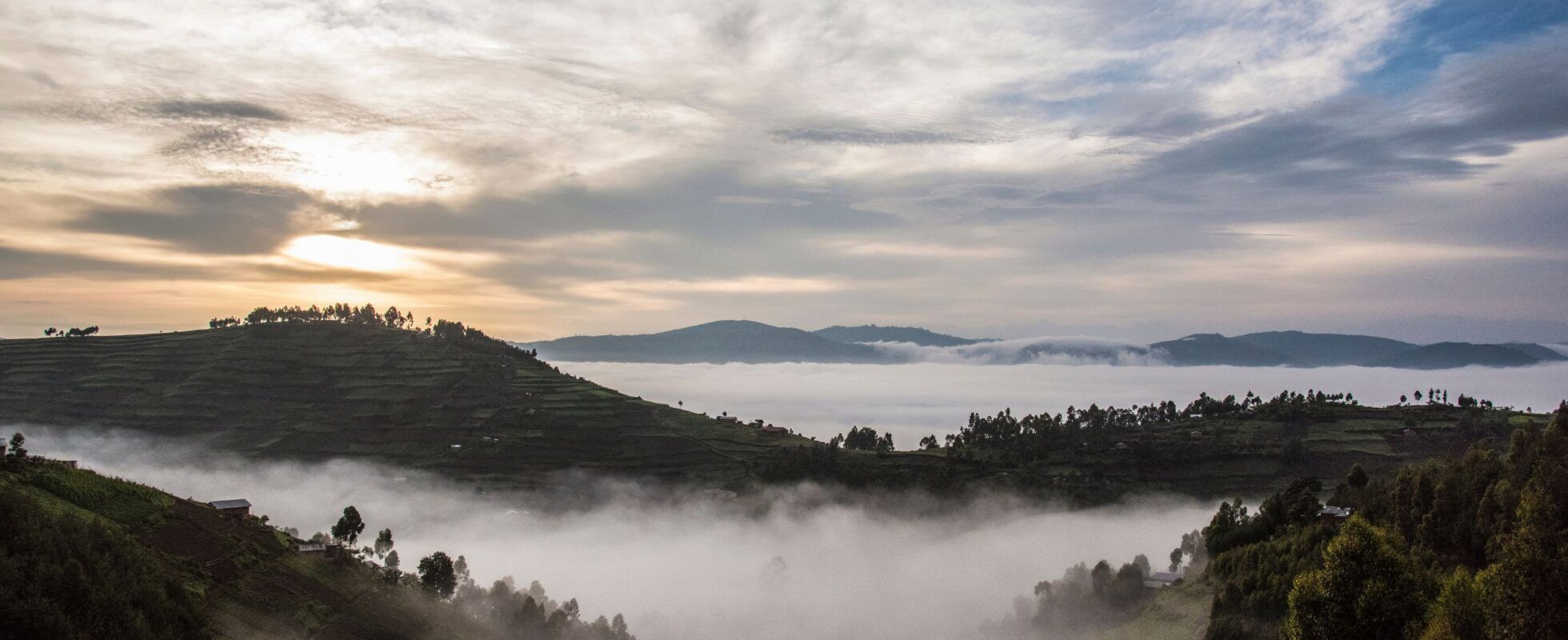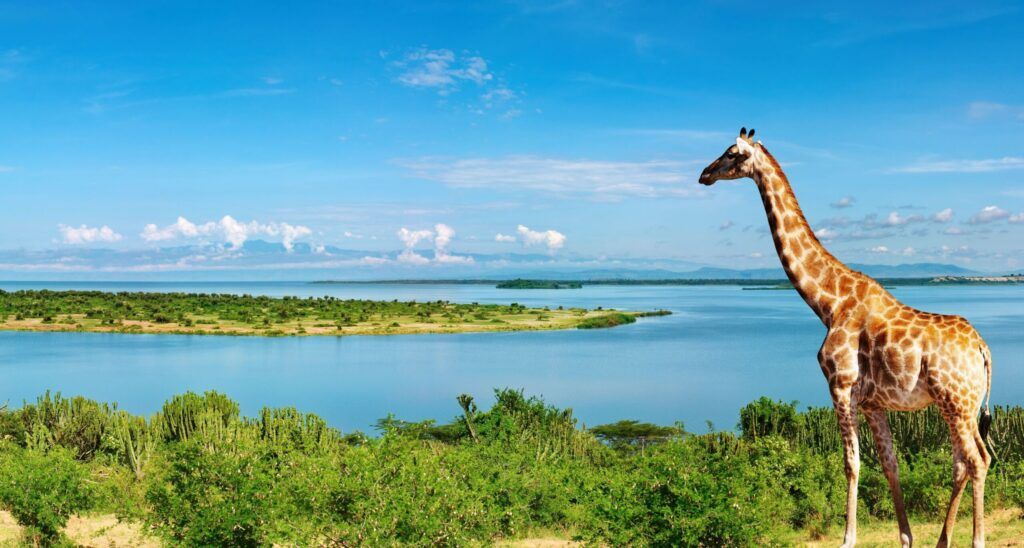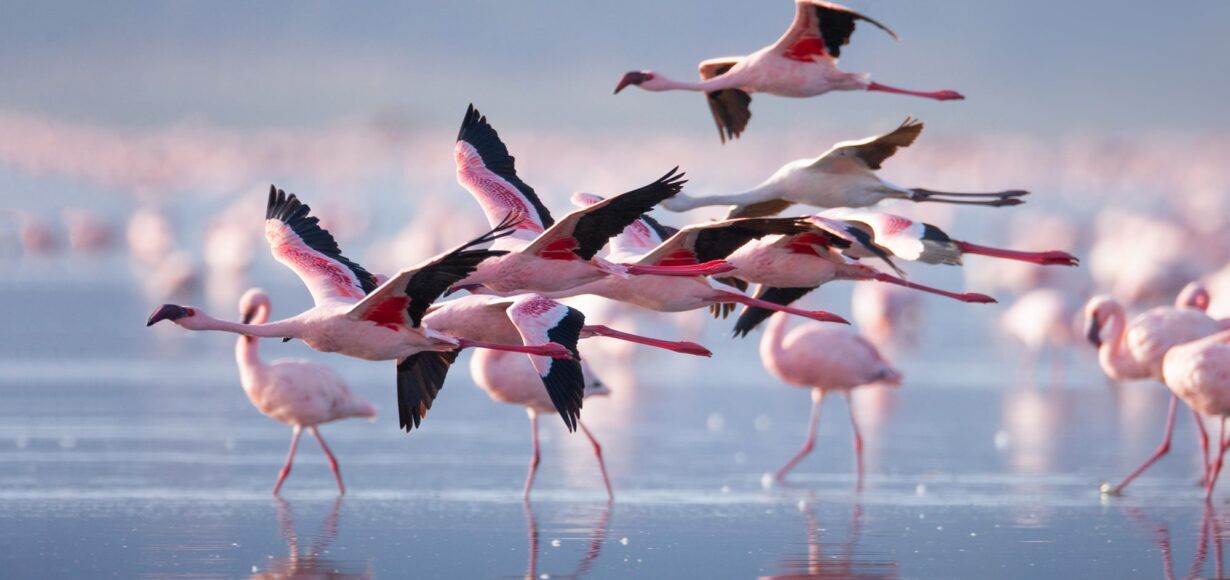- 24/7 service
- All accommodations
Bwindi Impenetrable National Park is located in southwestern Uganda. As one of the most visited parks in Uganda, it’s most famous for being one of the few parks where you can see mountain gorillas in their natural habitat. There are approximately 459 gorillas in the park, which is almost half of the entire population of mountain gorillas left in the wild.
Gorilla trekking in Bwindi Impenetrable National Park
Gorilla trekking in Bwindi Impenetrable National Park is a once-in-a-lifetime experience. Seeing these majestic animals in the wild is like nothing you’ve ever experienced before. Weighing up to 220kg, spotting them in the wild may seem scary… but rest assured, gorilla trekking is perfectly safe – for you and the animals. The hikes can be strenuous, however, with a bit of preparation most people can manage. There are four different areas within the park where you can spot the animals: Ruhijah in the East, Rushaga and Nkuringo in the South and Buhoma in the North.
Important to know: gorilla trekking is extremely popular, and you need both a guide and a permit. Our tip: book it well in advance – it’s worth it, promise!
The former life of the Batwa people (Pygmies)
After the forest was turned into a national park, the Batwa people, also known as “Keepers of the Forest”, were relocated into small villages at the edges of the national park. They are a hunter-gatherer tribe that lived in the area for thousands of years in symbiosis with nature. Today, they share a glimpse of what everyday life was like for them before they were relocated.
Watch out – for birds!
Voted as the best spot for birdwatching in Africa in 2011, this is one of the most popular activities in Bwindi, right behind gorilla trekking. Home to approximately 360 different bird species, and with 14 of them not recorded anywhere else in Uganda, this birdwatching spot makes the heart of (hobby) ornithologists skip a few beats. Get ready to see birds such as the African Emerald Cuckoo, Common Bulbul, Giant Kingfisher and many more.
Activities in Bwindi Impenetrable National Park
- Gorilla trekking
- Gorilla habituation
- Chimpanzee trekking
- Birdwatching
- Forest Walks
- Meet the Batwa people (Pygmies)
How to get there
You can get here by chartered or scheduled flight. Kihihi is the closest airport for the Buhoma and Ruhija areas of the park, and Kisoro airport is the closest airport to Rushaga and Nkuringo.
If you are planning on visiting Queen Elizabeth National Park during your visit to Uganda too, you can drive from there to the Northern edge of Bwindi in around three to four hours.
Climate
Being close to the equator, Bwindi has a tropical climate. Daytime temperatures usually hover around 23°Cand drop to around 11°C at night, depending on the altitude. Rain falls throughout the year, however considerably less during the dry season from June to August and December to February.
Best time to visit Bwindi Impenetrable National Park
The best time to visit Bwindi Impenetrable National Park is in the dry season between June and August or December to February. During these months, you have the highest chance of blue skies and little rain. During the rainy seasons October to November and March to May the paths will be slippery, there are more mosquitoes, and you’ll probably miss some amazing scenery as it will most likely be cloudy. However, these months can be good for bird watching as the heavy rain attracts migratory birds.
Information and facts
Bwindi Impenetrable National Park seems like it’s out of this world. Dive into this emerald green rainforest and discover one of the last places where mountain gorillas can roam freely. Even if gorilla trekking is the park’s biggest highlight, there’s more you can look forward to: many other primate species, countless of birds which you can only find here and a breathtaking flora.
Most common animals
- Mountain gorilla
- Chimpanzee
- Colobus monkey
- Red-tailed monkey
- 360 different birds including hornbills and turacos
- African elephant
- L’Hoest’s monkey
- Bush pig
- Giant forest hog
- Antelopes
- 200 butterfly species
Facts about Bwindi Impenetrable National Park
- 331 square kilometres (128 square miles)
- Established in 1991
- Became a UNESCO heritage site in 1994
- Home to over 300 bird species it is also a popular spot for birdwatching
- Forest has existed for more than 25,000 years and is the only forest in Africa where mountain gorillas and chimpanzees successfully co-exist


















